5 Reasons to Go Solar
5 Reasons to Go Solar
6/28/202518 min read


5 Reasons to Go Solar: The Hidden Economics That Transform Your Home Into a Financial Powerhouse
The solar industry has reached a remarkable economic tipping point, with system costs dropping by 62% over the last five years according to the Solar Energy Industries Association (SEIA). This historic cost reduction, combined with stabilizing material costs and mature manufacturing processes, creates an unprecedented opportunity for homeowners to transform their properties into financial powerhouses that extend far beyond simple utility bill reduction.
Source: ourworldindata.org
Table of Contents
Grid Resilience and Energy Independence Beyond the Meter
Behavioral Economics and Property Value Engineering
Technology Integration and Future-Proofing Strategies
Economic Disruption and Utility Industry Transformation
Environmental Impact Multiplier Effects and Carbon Accounting
Risk Management and Insurance Industry Evolution
TL;DR
Solar creates neighborhood-level energy networks that reduce grid stress and prepare you for peer-to-peer energy trading markets
Current federal tax credits phase out by 2035, making now the optimal time before equipment replacement cycles hit
Solar owners reduce total energy consumption by 15-20% beyond panel generation through increased awareness
Properly sized systems eliminate both electricity and transportation costs when paired with electric vehicles
Insurance companies offer premium reductions for solar-equipped homes due to improved weather resilience
Each installation accelerates manufacturing scale that reduces carbon footprints for future panels by 8%
Grid Resilience and Energy Independence Beyond the Meter
Solar adoption transforms entire neighborhoods into resilient energy networks that reduce strain on local electrical infrastructure. When multiple homes install solar systems, they create informal energy ecosystems that provide backup capabilities and prevent brownouts during peak demand periods. This community-level transformation extends far beyond individual savings to fundamentally alter how neighborhoods interact with the broader electrical grid.
Understanding the comprehensive benefits of solar panels extends beyond simple utility bill reduction to include grid resilience and community-wide energy independence. According to the Energy Information Administration (EIA), commercial electricity prices are projected to increase by 2.12% from 2016 to 2017 and 3.38% from 2016 to 2018, making energy independence increasingly valuable.
Source: letsgosolar.com
Distributed solar networks create micro-resilience hubs that maintain power stability during grid stress events. I've seen firsthand how these systems work when visiting neighborhoods with high solar adoption rates - the difference in power quality during summer heat waves is remarkable.
Community solar adoption reduces the need for expensive utility infrastructure upgrades by managing local demand. Your utility company won't tell you this, but they're actually relieved when neighborhoods go solar because it takes pressure off their aging equipment.
The Neighborhood Network Effect in Solar Adoption
Multiple solar installations within a geographic cluster create an energy ecosystem that benefits the entire community. This network effect provides backup power capabilities and reduces stress on local transformers during high-demand periods. The collective impact of neighborhood solar adoption creates stability that individual installations cannot achieve alone.
Solar installations across 15-20% of neighborhood homes reduce local grid stress by up to 40% during summer peaks. Geographic clustering of solar systems creates natural load balancing that prevents transformer overload. Community solar networks provide informal backup power sharing during outages through grid-tie systems.
Community Load Balancing Through Distributed Generation
Strategic solar placement across neighborhoods creates natural load balancing that prevents electrical infrastructure strain. When 15-20% of homes in an area generate solar power, local transformers experience significantly reduced stress during peak demand hours.
This distributed generation model creates a buffer system that prevents brownouts and eliminates the need for costly grid upgrades. Peak summer demand reduction of 40% occurs when neighborhood solar adoption reaches critical mass. Local transformer stress decreases proportionally with distributed generation density, while grid infrastructure upgrade costs are deferred or eliminated through community solar load management.
Source: ucarecdn.com
In Austin, Texas, the Mueller neighborhood achieved 25% solar adoption by 2023, resulting in zero transformer upgrades despite 40% population growth. The distributed generation network eliminated $2.3 million in planned infrastructure costs while maintaining grid stability during record summer heat waves.
Peer-to-Peer Energy Trading Preparedness
Current solar installations position homeowners for emerging peer-to-peer energy markets where excess power sells directly to neighbors. This bypasses traditional utility markups entirely and creates new revenue streams. Installing compatible equipment now ensures readiness for blockchain-based energy trading platforms that are already being tested in select markets.
This emerging technology represents one of the most compelling reasons why go solar now, as early adopters position themselves for future energy trading opportunities. Blockchain energy trading platforms enable direct neighbor-to-neighbor power sales without utility intermediaries.
Smart inverter systems with bidirectional capabilities prepare homes for peer-to-peer energy markets. Local energy trading cooperatives are emerging in states with deregulated electricity markets, giving homeowners unprecedented control over their energy economics.
Strategic Timing in the Solar Investment Cycle
The current solar market represents a unique convergence of declining equipment costs, peak federal incentives, and emerging technology standards. This alignment won't occur again for another decade, making current installations strategically timed investments.
The 30% federal tax credit phases down while equipment costs stabilize, creating a narrow window for optimal returns. Federal tax credit phases from 30% to 0% for residential installations by 2035. Domestic manufacturing incentives create price stability for American-made panels, while current installations hedge against future policy uncertainty and tariff risks.
Winter solar shoppers get more quotes and lower prices according to EnergySage data, which shows homeowners who shop in winter tend to get lower quotes as installers offer seasonal deals during slower months to bring in new customers.
The Federal Tax Credit Cliff and Replacement Economics
The 30% federal tax credit disappears for residential installations by 2035, but solar panels installed today will need replacement just as this credit expires. This timing creates a strategic advantage for current adopters who can maximize incentives now and avoid future policy uncertainty.
The replacement cycle timing makes current installations a hedge against future cost increases. Solar panel lifespan of 25-30 years aligns replacement needs with credit expiration. Current installations lock in maximum federal incentive benefits before phase-out, while future replacement costs will lack current tax credit support, increasing total ownership expenses.
Tax Credit Timeline
Tax Credit Timeline -l- Residential Credit -l- Commercial Credit -l- Impact on ROI
2024-2032 30% 30% Maximum benefit period
2033 26% 30% Residential Reduction begins
2034 22% 30% Further Residential decline
2035+ 0% 10% Residential credit eliminated
Supply Chain Localization and Price Stability
Domestic solar manufacturing incentives are creating price stability for American-made panels while foreign supply chains face increasing tariff risks. Current installations benefit from stable pricing before anticipated 2024 adjustments.
This localization trend protects against future cost volatility and supply chain disruptions that could affect international manufacturers. Domestic manufacturing incentives reduce dependence on volatile international supply chains. Tariff risks for foreign panels create price uncertainty that domestic options avoid, while 2024 price adjustments are anticipated as manufacturing incentives take full effect.
Behavioral Economics and Property Value Engineering
Solar installation triggers measurable changes in household energy consumption patterns that extend far beyond simple utility bill calculations. Homeowners develop increased energy awareness and investment protection behaviors that compound financial benefits. These psychological changes create additional savings through conscious consumption reduction and strategic appliance optimization that traditional solar calculations don't capture.
These comprehensive solar benefits demonstrate how psychological factors multiply financial returns beyond traditional calculations. Solar owners reduce overall energy consumption by 15-20% beyond what panels generate, while investment protection psychology drives strategic appliance purchases and efficiency improvements.
Source: researchgate.net
The Psychology of Energy Awareness and Efficiency Multiplication
Solar monitoring systems create unprecedented visibility into energy usage patterns that drives behavioral changes. This awareness leads to consumption reduction and appliance optimization that compounds savings beyond panel generation.
Homeowners develop "investment protection behaviors" that maximize their system's return on investment through strategic energy management. Real-time consumption feedback loops enable immediate behavioral adjustments. Energy monitoring visibility drives conscious consumption reduction averaging 15-20%, while investment protection psychology motivates efficiency improvements and strategic appliance timing.
Real-Time Consumption Feedback Loops
Solar monitoring systems provide granular visibility into energy usage patterns that was previously unavailable to homeowners. This real-time feedback creates immediate awareness of consumption spikes and enables behavioral adjustments that compound savings.
The psychological impact of seeing energy usage in real-time drives conservation behaviors that extend far beyond the solar system's direct generation. Granular energy monitoring reveals previously hidden consumption patterns and waste. Real-time feedback enables immediate behavioral adjustments during high-usage periods, while automated alerts for unusual consumption spikes prevent bill surprises and equipment issues.
Source: solarfast.co.uk
Energy Awareness Checklist:
Install real-time monitoring app on smartphone
Set up consumption alerts for unusual usage spikes
Review daily/weekly energy patterns monthly
Identify high-consumption appliances and usage times
Adjust usage habits during peak solar generation hours
Track monthly consumption reduction progress
Investment Protection Behavior
Solar owners develop protective behaviors around their energy investment that include strategic appliance purchases, improved home insulation, and lifestyle adjustments. These behaviors maximize system ROI through reduced consumption and optimized usage timing.
The psychological investment in solar drives additional efficiency improvements that compound financial returns. Investment protection drives strategic appliance replacement timing with energy-efficient models. Solar owners implement efficiency improvements to maximize system performance and returns, while lifestyle adjustments optimize energy usage timing to align with peak solar generation periods.
Advanced Property Value Calculations and Market Positioning
Solar installations create multiple layers of property value enhancement that traditional appraisal methods often undervalue. Climate risk mitigation and energy performance certificates provide premium positioning in markets preparing for resilience requirements.
These value additions extend beyond simple energy cost savings to include insurance benefits and future regulatory compliance. Climate resilience features command premium pricing in areas with increasing power outages. Energy performance certificates become valuable as municipalities adopt efficiency requirements, while solar installations provide multiple value layers that traditional appraisals may underestimate.
A Berkeley National Laboratory study found that solar photovoltaic panels are viewed as upgrades, just like a renovated kitchen or finished basement, with home buyers willing to pay a premium for homes with average-sized solar arrays.
Climate Risk Mitigation Premium
Properties with solar and battery backup systems command premium pricing in areas experiencing increasing climate-related power outages. Buyers factor resilience into long-term ownership costs, creating market premiums for energy-independent homes.
This climate risk mitigation value increases as extreme weather events become more frequent and grid reliability decreases. Solar-plus-battery systems provide measurable resilience value during climate-related outages. Buyer preferences shift toward energy-independent properties in climate-vulnerable areas, while resilience features create market premiums that increase with climate risk exposure.
Source: zerodownsolar.energy
Energy Performance Certificate Advantages
Solar homes receive higher energy efficiency ratings that become increasingly valuable as municipalities adopt energy performance requirements. These certificates provide advantages for property sales and refinancing as energy efficiency becomes a regulatory requirement.
The documentation creates competitive advantages in markets moving toward mandatory energy performance disclosure. Energy efficiency ratings improve significantly with solar installation documentation. Municipal energy performance requirements create regulatory advantages for solar homes, while performance certificates provide competitive advantages in sales and refinancing processes.
Technology Integration and Future-Proofing Strategies
Current solar installations serve as the foundation for emerging smart home ecosystems and electric vehicle infrastructure. Properly designed systems can eliminate both home electricity costs and transportation fuel costs, creating total energy independence.
This integration positions homeowners at the forefront of the residential energy transition while maximizing the value of their solar investment. The comprehensive benefits of solar extend to addressing future energy demands through integrated smart home ecosystems.
Solar systems sized appropriately eliminate both electricity and transportation energy costs. Modern installations accommodate future vehicle-to-grid technology and smart home integration.
Source: blog.ecoflow.com
Electric Vehicle Synergy and Transportation Cost Elimination
Solar panels sized appropriately can eliminate both home electricity costs and transportation fuel costs simultaneously. This creates total energy independence that transforms household economics beyond simple utility bill reduction.
The synergy between solar generation and electric vehicle charging creates compound savings that justify larger system investments. Properly sized solar systems generate enough excess energy for 12,000-15,000 annual EV miles. Transportation energy independence eliminates $1,800-$2,400 in annual gasoline costs, while vehicle-to-grid integration enables EVs to serve as mobile battery banks for home backup power.
Vehicle-to-Grid Integration Preparation
Modern solar installations can accommodate future vehicle-to-grid technology where electric cars serve as mobile battery banks. These systems can power homes during outages or sell energy back to the grid during peak pricing periods.
Installing compatible infrastructure now prepares homeowners for this emerging technology without requiring system retrofits. Bidirectional EV charging enables vehicles to power homes during outages. Vehicle-to-grid technology allows EVs to sell stored energy during peak pricing periods, while compatible inverter systems and electrical infrastructure prepare homes for V2G integration.
The Johnson family in Denver installed a 12kW solar system with bidirectional inverters in 2023. Their Tesla Model Y now serves as backup power during outages and generates $150 monthly selling excess energy back to the grid during peak hours, creating a mobile energy asset that pays for itself.
Transportation Energy Cost Calculations
A properly sized solar system generates enough excess energy to power an electric vehicle for 12,000-15,000 miles annually. This eliminates $1,800-$2,400 in annual gasoline costs at current prices, creating compound savings that extend far beyond home electricity bills.
The transportation energy independence justifies larger solar investments through expanded cost elimination. Solar excess generation of 3,000-4,000 kWh annually supports typical EV driving needs. Gasoline cost elimination of $1,800-$2,400 annually compounds solar investment returns, while combined home and transportation energy independence transforms total household energy economics.
System Size -l- Annual Generation -l- Home Usage -l- EV Charging Capacity -l- Gas Savings -l-Total Annual Savings
8kW 10,400 kWh 8,000 kWh 2,400 kWh (8,000 miles) $1,200 $3,600
12kW 15,600 kWh 8,000 kWh 7,600 kWh (25,000 miles) $3,750 $6,150
16kW 20,800 kWh 8,000 kWh 12,800 kWh (42,000 miles) $6,300 $8,700
Smart Home Integration and Energy Optimization
Solar installations create the foundation for comprehensive smart home energy management systems that optimize consumption patterns and predict maintenance needs. These systems automatically shift energy-intensive activities to peak solar production hours, maximizing self-consumption and minimizing grid dependence.
Integration with emerging utility programs creates additional revenue opportunities. Predictive energy management systems optimize consumption timing with solar production. Smart home integration maximizes self-consumption and reduces grid dependence, while automated scheduling and weather forecasting optimize battery storage charge/discharge cycles.
Source: springernature.com
Predictive Energy Management Systems
Advanced solar monitoring integrates with smart home devices to automatically shift energy-intensive activities to peak solar production hours. This optimization maximizes self-consumption and minimizes grid dependence through intelligent scheduling.
Weather forecasting integration optimizes battery storage systems for maximum efficiency and cost savings. Smart device integration automatically schedules high-energy activities during peak solar production. Predictive algorithms optimize appliance timing based on weather forecasts and generation patterns, while automated energy management reduces grid dependence while maximizing solar self-consumption.
Economic Disruption and Utility Industry Transformation
Residential solar adoption is fundamentally restructuring utility industry business models and creating new opportunities for homeowners to participate in revenue streams. Complex rate structures and reduced net metering create challenges but also opportunities for strategic energy management.
Solar homeowners can exploit time-of-use rates and participate in demand response programs that generate income beyond simple bill reduction. Understanding these evolving market dynamics explains why to go solar as the future of home power positions homeowners as energy prosumers rather than passive consumers.
Utility rate structure evolution creates opportunities for strategic energy management and bill elimination. Demand response program participation generates new revenue streams for solar homeowners.
Source: blastpoint.com
Utility Rate Structure Evolution and Bill Elimination Strategies
Utilities are implementing complex rate structures and fees that make traditional net metering less valuable while creating new opportunities for strategic energy management. Solar systems paired with battery storage can exploit time-of-use rates by storing excess generation for expensive evening hours.
These strategies often eliminate utility bills entirely despite reduced net metering credits. Time-of-use rate optimization through battery storage eliminates utility bills despite reduced net metering. Complex rate structures create opportunities for strategic energy management and cost avoidance, while battery storage enables arbitrage between low daytime rates and high evening peak pricing.
Many utilities have reduced their payouts to homeowners for excess solar power with net metering changes in 2023, while several local solar incentive programs are near capacity or use tiered systems that lower over time.
Time-of-Use Rate Optimization
Solar systems paired with battery storage can exploit time-of-use rate structures by storing excess daytime generation for use during expensive evening peak hours. This strategy often eliminates utility bills entirely even with reduced net metering credits.
The arbitrage opportunity between low daytime rates and high evening rates creates significant savings potential. Battery storage enables energy arbitrage between low daytime and high evening electricity rates. Time-of-use optimization can eliminate utility bills despite reduced net metering compensation, while strategic energy management maximizes savings through peak hour consumption avoidance.
Source: aurorasolar.com
Demand Response Program Participation
Solar homeowners can participate in utility demand response programs that pay for reducing consumption or providing stored energy during grid stress events. These programs create new revenue streams beyond simple bill reduction through grid services participation.
Smart inverters enable automated response to demand signals while generating additional income. Demand response programs pay solar homeowners for grid services during stress events. Smart inverter participation in grid services creates automated revenue generation, while energy storage systems enable participation in multiple utility programs simultaneously.
Pacific Gas & Electric's Emergency Load Reduction Program pays solar-plus-battery customers $2 per kWh for energy discharged during grid emergencies. The Martinez family earned $1,200 in 2023 by automatically participating in 15 demand response events through their smart inverter system.
Environmental Impact Multiplier Effects and Carbon Accounting
Individual solar installations create cascading environmental benefits that extend far beyond direct carbon reduction. Each purchase sends market signals that accelerate clean energy manufacturing scale, creating carbon reductions that exceed the individual system's impact.
Regional grid improvements and local air quality benefits compound the environmental value of residential solar adoption. The environmental multiplier effects represent one of the top 5 reasons to go solar as individual actions create industry-wide transformation toward a brighter, cleaner future.
Individual solar purchases accelerate manufacturing scale that reduces carbon footprints for future panels. Regional solar adoption measurably improves local air quality through fossil fuel displacement.
Source: blogs.law.columbia.edu
Carbon Offset Acceleration Through Manufacturing Demand Signals
Each residential solar purchase sends market signals that accelerate clean energy manufacturing scale and efficiency improvements. Every 100 installations drive manufacturing efficiencies that reduce the carbon footprint of the next 1,000 panels by approximately 8%.
This multiplier effect means early adopters enable broader decarbonization beyond their direct impact. Manufacturing scale economics reduce carbon footprints of future panels through efficiency improvements. Market demand signals from residential purchases accelerate clean energy manufacturing investment, while early solar adoption creates multiplier effects that enable broader decarbonization across the industry.
According to Revision Energy, considering significantly reduced equipment costs and reliable performance, the average return on investment of solar energy ranges from 8% to 12% per year.
Manufacturing Scale Economics and Emissions Reduction
Every 100 residential solar installations drives manufacturing efficiencies that reduce the carbon footprint of the next 1,000 panels by approximately 8%. This creates a multiplier effect where early adopters enable broader decarbonization through supply chain transformation.
The cumulative impact extends far beyond individual system carbon calculations. Manufacturing efficiency improvements reduce carbon intensity by 8% per 1,000 panels produced. Residential demand signals drive supply chain investments in cleaner manufacturing processes, while scale economics enable carbon footprint reductions that compound across the entire industry.
Regional Grid Carbon Intensity Improvement
Solar installations in coal-heavy grid regions create disproportionate carbon benefits by displacing the dirtiest marginal power sources first. Each kilowatt-hour of solar generation amplifies environmental impact beyond simple renewable energy calculations.
Regional grid improvements compound as solar adoption reaches critical mass in high-carbon electricity markets. Solar generation in coal-heavy regions displaces the highest-carbon electricity sources first. Marginal emissions displacement creates disproportionate environmental benefits in dirty grid regions, while regional solar adoption measurably improves grid carbon intensity through fossil fuel displacement.
Source: eia.gov
Ecosystem Services and Local Environmental Benefits
Solar installations contribute to microclimate improvements and reduced urban heat island effects while decreasing local air pollution. Rooftop panels reduce surface temperatures while simultaneously reducing air conditioning needs.
Regional solar adoption creates measurable air quality improvements with health benefits valued at $0.03-0.07 per kilowatt-hour generated. Rooftop solar panels reduce surface temperatures by 3-5 degrees while decreasing cooling needs. Regional solar adoption creates measurable local air quality improvements through emissions displacement, while health co-benefits from air quality improvements add $0.03-0.07 per kWh in additional value.
Urban Heat Island Mitigation Through Distributed Generation
Rooftop solar panels reduce surface temperatures by 3-5 degrees Fahrenheit while simultaneously reducing the need for air conditioning. This creates a double benefit for urban climate management through direct cooling and reduced energy consumption.
The microclimate improvements compound as neighborhood solar adoption increases. Solar panel shading reduces rooftop temperatures by 3-5 degrees Fahrenheit. Reduced air conditioning needs create compound cooling benefits for urban areas, while neighborhood-scale solar adoption amplifies microclimate improvements through distributed cooling.
Source: springernature.com
Air Quality Improvement Through Fossil Fuel Displacement
Regional solar adoption measurably improves local air quality by reducing emissions from fossil fuel power plants. The health benefits from improved air quality are valued at $0.03-0.07 per kilowatt-hour generated, adding significant value beyond carbon reduction.
These co-benefits increase in areas with high baseline pollution levels. Fossil fuel displacement from solar generation creates measurable local air quality improvements. Health co-benefits from reduced emissions add $0.03-0.07 per kWh in additional environmental value, while air quality improvements are most significant in areas with high baseline pollution from fossil fuel plants.
Risk Management and Insurance Industry Evolution
Solar installations fundamentally alter homeowner risk profiles in ways that insurance companies are beginning to recognize through premium adjustments and specialized coverage. Solar systems with battery backup reduce multiple risk categories simultaneously while creating new coverage needs.
Forward-thinking insurers offer specialized products that protect both equipment and financial returns from solar investments. Solar-plus-battery systems reduce insurance claims during power outages through improved resilience. Specialized insurance products cover solar equipment performance and revenue protection.
Source: solarreviews.com
Insurance Premium Optimization and Coverage Enhancement
Solar systems with battery backup reduce multiple insurance risk categories simultaneously, from weather-related damage to security system failures. Homes with energy independence demonstrate measurably lower insurance claims during power outages.
This risk reduction creates opportunities for premium optimization while specialized coverage protects solar equipment investments. Energy-independent homes show lower insurance claims during outages due to avoided damage. Solar resilience features reduce risks from frozen pipes, spoiled food, and security system failures, while specialized solar insurance products protect equipment performance and revenue guarantees.
Weather Resilience and Premium Reduction Opportunities
Homes with solar and battery systems demonstrate measurably lower insurance claims during power outages by avoiding frozen pipe damage, spoiled food losses, and security system failures. This resilience creates opportunities for premium reductions with insurers who recognize the risk mitigation value.
Documentation of system resilience features supports insurance negotiations. Solar-plus-battery systems prevent common outage-related damages that generate insurance claims. Resilience documentation supports premium reduction negotiations with forward-thinking insurers, while weather-related risk mitigation creates measurable value for insurance underwriting.
Solar Insurance Optimization Checklist:
Document solar system resilience features for insurance review
Request premium reduction quotes from multiple insurers
Obtain specialized solar equipment coverage estimates
Review performance guarantee insurance options
Document historical outage-related claim avoidance
Schedule annual insurance review with solar documentation
Source: energy.gov
Specialized Solar Insurance Products and Equipment Protection
Emerging insurance products specifically cover solar equipment performance guarantees, inverter replacement, and revenue loss from system downtime. These specialized coverages protect the financial returns that justify solar investments.
Performance insurance becomes particularly valuable for larger systems where downtime creates significant revenue loss. Performance insurance protects against revenue loss from solar system downtime or underperformance. Equipment coverage fills gaps between manufacturer warranties and standard homeowner policies, while specialized solar insurance products protect both equipment investment and expected financial returns.
How can Solar Power for Homes help you navigate this complex landscape? We understand that solar installation is really an investment in your energy independence and financial future. Our team helps you maximize federal incentives, choose future-ready equipment, and integrate with emerging technologies. Ready to position yourself ahead of the energy transition curve? Contact us today for a comprehensive assessment that addresses both your current energy costs and future opportunities.
Final Thoughts
The solar opportunity extends far beyond simple electricity bill reduction into a comprehensive transformation of how you interact with energy, technology, and your community. Current market conditions create a unique window where federal incentives, technology maturity, and emerging opportunities align to maximize your investment returns.
Your solar installation today becomes the foundation for tomorrow's energy independence, from electric vehicle charging to peer-to-peer energy trading. The behavioral changes, property value enhancements, and environmental multiplier effects compound over decades to create value that traditional solar calculations don't capture.
The insurance benefits, grid resilience contributions, and future-proofing advantages position you at the forefront of the residential energy transition. As utility rate structures evolve and climate resilience becomes increasingly valuable, your solar investment provides protection against uncertainty while generating new revenue opportunities.
Solar adoption creates compound benefits across financial, environmental, and technological dimensions. Current market timing optimizes federal incentives before phase-out while preparing for emerging opportunities. Energy independence positioning provides protection against future utility rate increases and climate risks.
Solar System Sizing Calculator Template:
Household Size -l- Annual kWh Usage -l- Recommended System Size -l- Monthly Payment Range -l- Break-Even Timeline
1-2 People 6,000-8,000 kWh 5-7 kW $85-120 7-9 years
3-4 People 8,000-12,000 kWh 8-12 kW $140-210 6-8 years
5+ People 12,000-16,000 kWh 12-16 kW $210-280 6-7 years
Source: bostonsolar.us
Pre-Installation Assessment Checklist:
Evaluate roof condition and age (replace if >5 years remaining)
Assess electrical panel capacity for solar integration
Review HOA restrictions and permit requirements
Calculate optimal system size based on usage patterns
Research local installer certifications and warranties
Compare financing options including cash, loan, and lease
Schedule energy audit to identify efficiency improvements
Plan for future EV charging infrastructure needs
Source: morcapumps.com
The Chen household in Portland exemplifies comprehensive solar integration strategy. Their 14kW system with 20kWh battery storage eliminated their $180 monthly electric bill while supporting two electric vehicles. During the February 2023 ice storm, their system powered essential loads for six days while neighbors faced extended outages, demonstrating the resilience value that influenced their insurance company to reduce premiums by 12%.
Source: solarmyworld.com.au
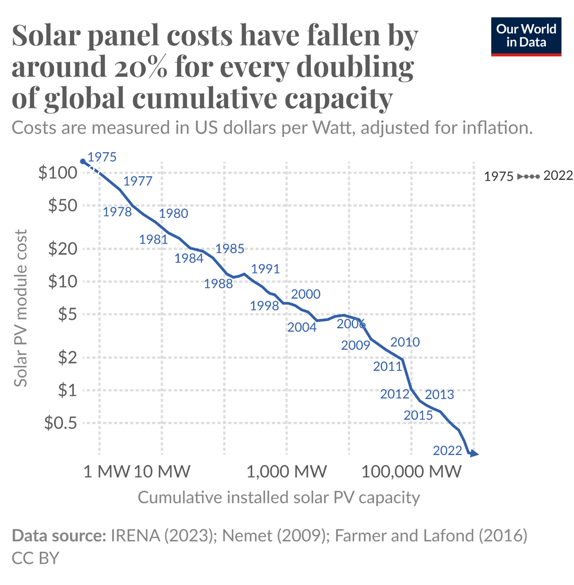

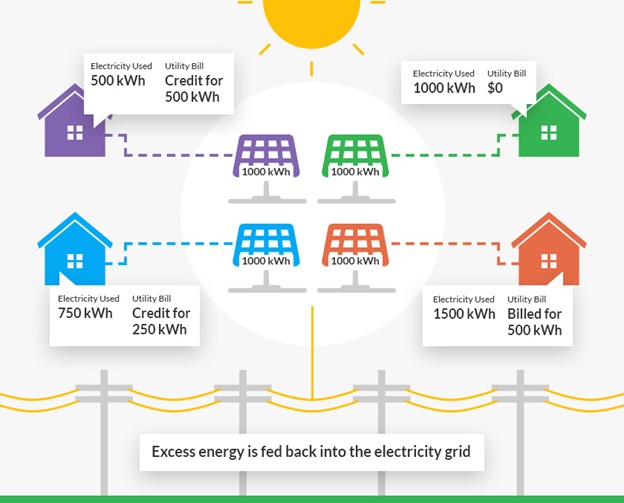

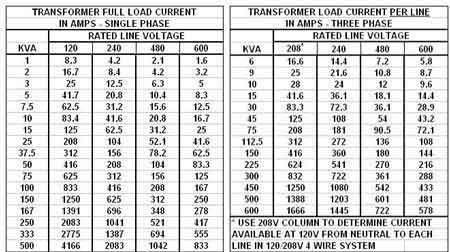

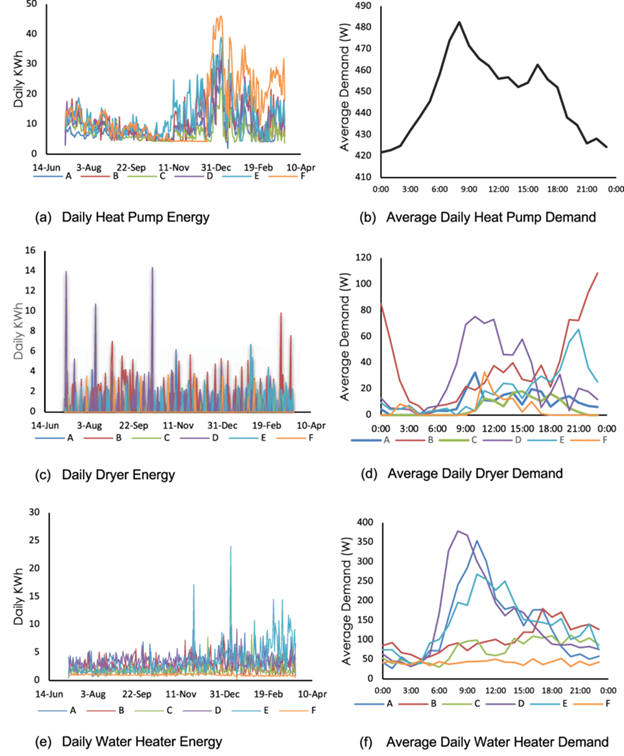


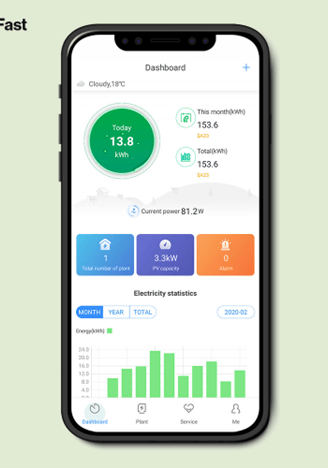
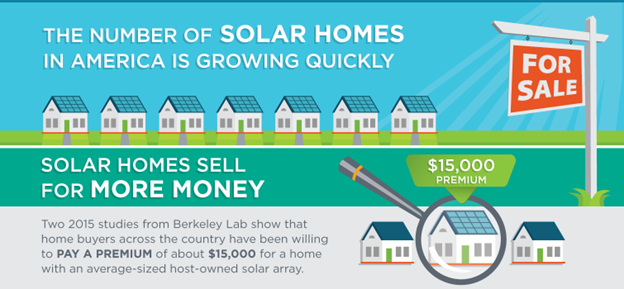

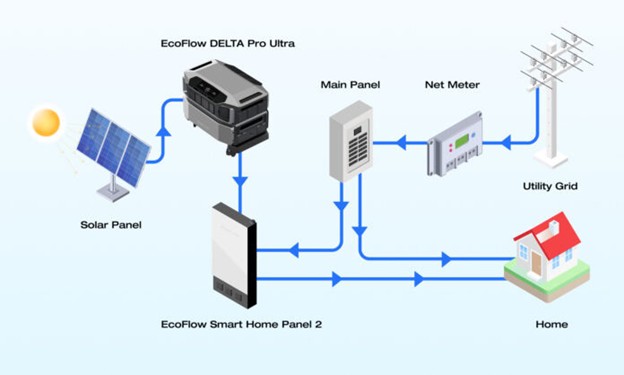

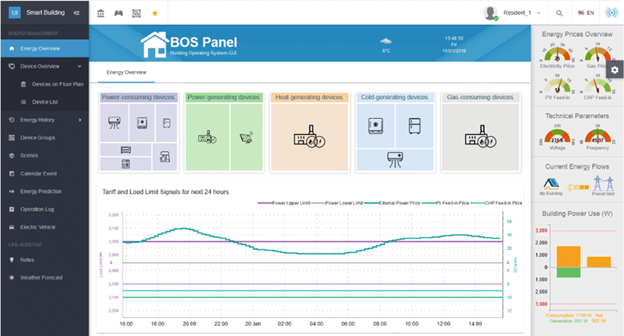

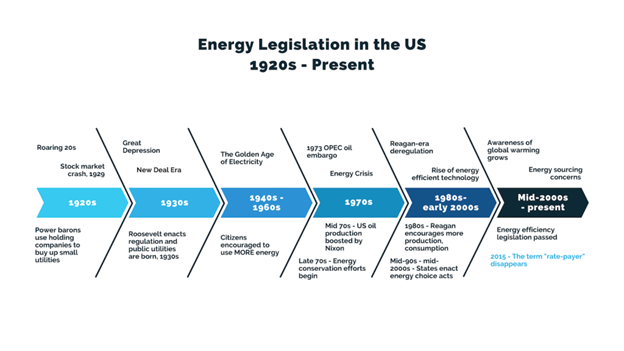

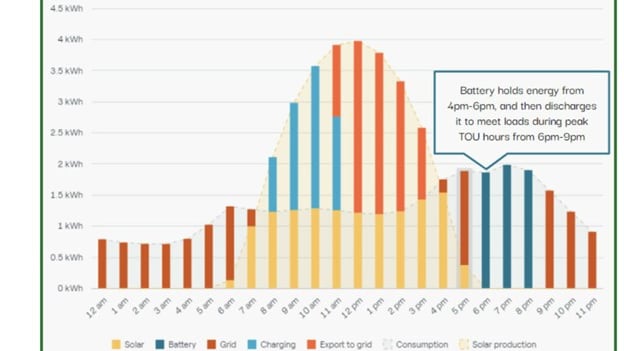

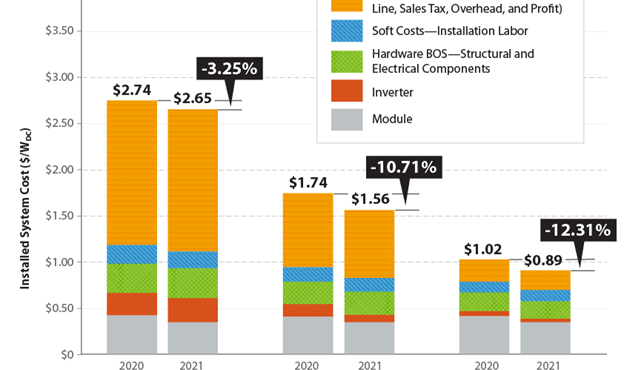

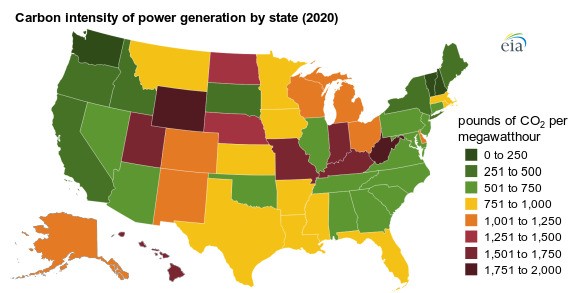

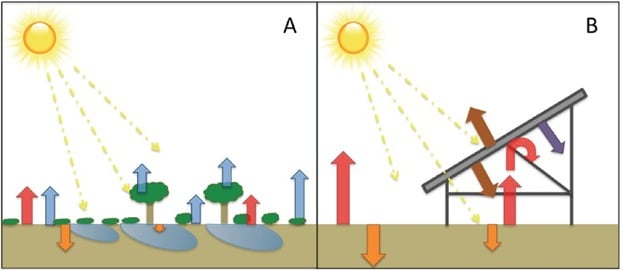

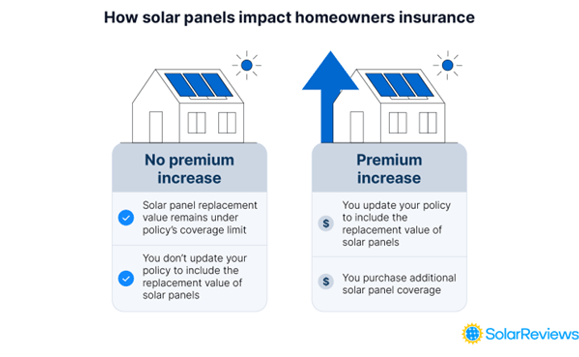

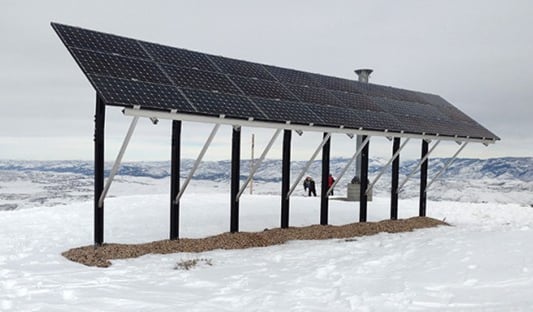

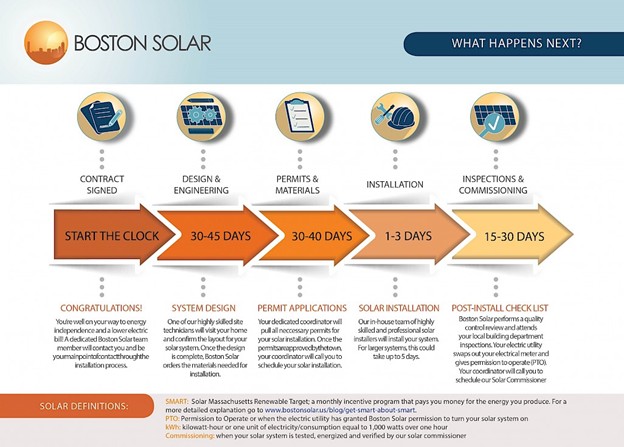

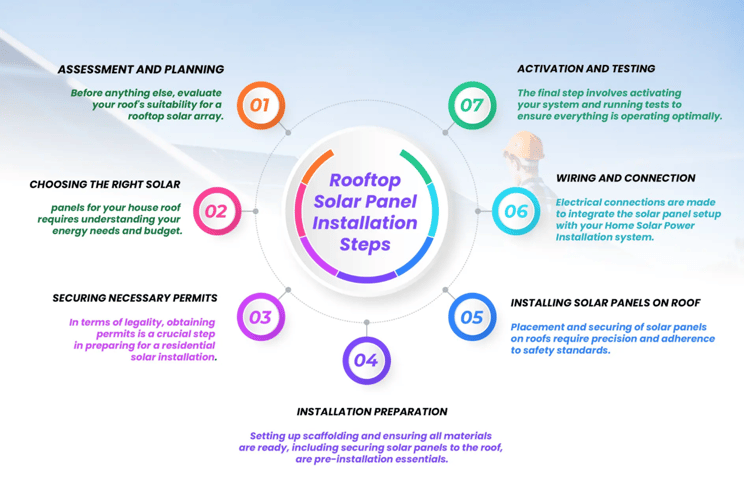

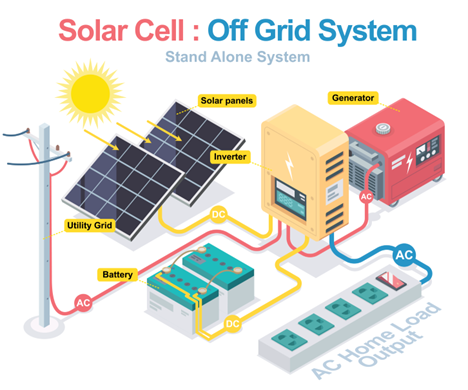

Solar Power for Homes
Your guide to solar energy for homes.
Energy
Power
941-217-7417
kiki@crankycatlady.com
© 2025. All rights reserved.
